Exterminate Stink Bugs in cannabis cultivation is a sophisticated process with its own set of unique challenges.
Among these, managing pests ranks as one of the most daunting tasks, with stink bugs emerging as a significant threat in recent years. Originally found in Eastern Asia, these pests have not only made their way to the US in the 90s but have now infiltrated Europe’s cannabis scene.
This comprehensive guide aims to provide detailed insights into the nature of these pests, their impacts on cannabis cultivation, and the most effective measures to control and prevent their infestations.
Stink bugs, a group of insects from the family Pentatomidae, have garnered significant attention as invasive pests in recent years. They are relatively small, averaging an inch in size, and can be identified by their hard, shield-like shells.
Their color varies depending on the species, with most commonly known variants exhibiting a brown hue, though there are also green species. The variety in their appearance adds to the complexity of their identification and underscores the importance of familiarizing oneself with these pests.
The moniker ‘stink bug‘ is derived from their defining characteristic: the unpleasant odor they release as a defense mechanism when disturbed or squashed.
His smell, produced by glands located on the underside of their body, serves as a protective mechanism against natural predators such as lizards, birds, and even some insect species.
While stink bugs are not harmful to humans in terms of health, their voracious appetite for plant material poses a significant concern for cannabis growers.
They feed by piercing plant tissues and sucking the sap, leading to deformities and compromised plant health. Their preferred dietary components include the flowers and developing seeds of cannabis plants, which can seriously impact the overall yield and quality of cannabis crops.
The damage can be severe, resulting in stunted growth, yellowing leaves, and even plant death if the infestation is heavy.
Although native to Eastern Asia, stink bugs have become global pests, having been inadvertently introduced to the US in the late 20th century, and more recently to Europe. They’ve adapted remarkably well to these new environments, thanks in part to their wide host range and the lack of natural predators.
Their rapid proliferation and the substantial harm they can cause to cannabis crops have elevated them from a mere nuisance to a formidable adversary for cannabis growers worldwide.
Understanding the biology, and behavior, and identifying characteristics of stink bugs is the first step towards implementing effective control measures in cannabis cultivation. Armed with this knowledge, growers can remain vigilant, spot early signs of infestation, and take appropriate action promptly.
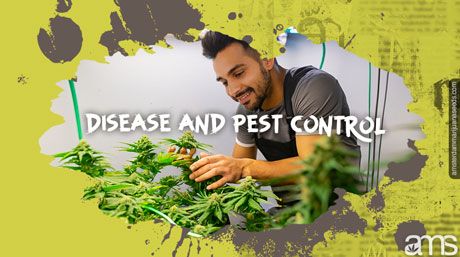
The ability to detect a stink bug infestation early is a vital element in controlling and minimizing its potential harm.
This process requires a keen eye and a proactive approach to regularly inspect your cannabis plants. It’s recommended to establish a routine of daily check-ups, scrutinizing every part of the plant, including stems, leaves, and buds, particularly during their active season from spring through late fall.
Stink bugs have a characteristic way of causing damage to plants. Their feeding habits involve piercing the plant tissues and sucking the sap, which results in visibly distorted leaves and stunted growth.
Additionally, they leave behind small, discolored patches or holes on the plant, a clear sign of their feeding activity. You might also notice black or dark droppings near their feeding areas, another hallmark of their presence.
Moreover, the smell stink bugs emit is another key identifying factor. This distinctive, foul odor is a defensive mechanism, which they use when they’re disturbed or feel threatened.
If you sense this peculiar smell, it should act as an immediate alert signaling the presence of stink bugs. In combination, these visual and olfactory clues can guide your inspection process, aiding early detection and prompt action to combat the stink bug infestation.
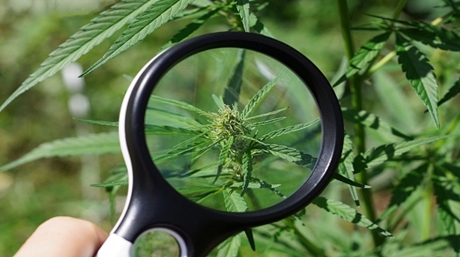
Stink bugs pose a significant threat to cannabis cultivators, making their effective eradication an imperative task.
While daunting at first, with diligent efforts and a strategic approach, eliminating these pests becomes achievable. The foundation of this strategy lies in maintaining an immaculate and well-organized growing area.
A clutter-free environment is less inviting to stink bugs, reducing their potential breeding and hiding spots. Removal of weeds and old leaves that have fallen under the plants is crucial as these organic materials offer ideal conditions for stink bugs to thrive.
Sanitation extends beyond your plants. Consider the cleanliness of your cultivation tools and containers, and ensure that your gardening clothes are clean.
All these factors can inadvertently introduce or propagate pests in your garden. Regular sanitation practices will not only confine the spaces stink bugs can inhabit but also decrease the likelihood of other pests finding your garden appealing.
Spotting stink bugs requires careful handling. It’s of utmost importance to avoid crushing them as they emit an unpleasant smell that can linger in your garden and potentially attract other pests like ants. Utilize tools like soft tweezers or a brush for their gentle removal from your plants, preventing the release of their unpleasant odor.
This meticulous approach to eradication, paired with rigorous preventive practices, can help maintain a stink-bug-free cannabis garden.

Apart from these immediate steps, it’s vital to establish a comprehensive pest management strategy.
One method involves taking your plants outdoors and spraying them with a hose. This will dislodge both the bugs and their eggs, helping you remove a large portion of the infestation at once. If a hose isn’t available, gently shaking the plants can also cause the bugs to lose their grip and fall off.
For severe infestations, the use of insecticides may be necessary. However, natural solutions should be your first line of defense. Neem oil, for instance, is an all-natural insecticide that can effectively tackle a variety of pests, including stink bugs. It’s not toxic to humans, unlike many chemical pesticides, and poses less risk to your plants.
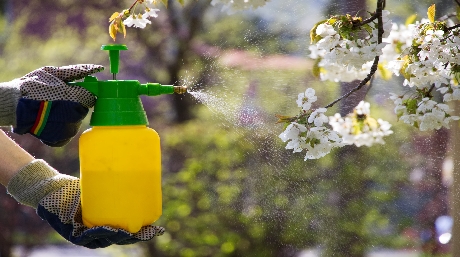
Other natural alternatives include garlic spray, tomato leaf spray, and diatomaceous earth.
In addition to these immediate pest control methods, prevention is key in long-term stink bug management. Regularly monitor your garden for early signs of infestation, maintain clean cultivation practices, and consider natural pest deterrents such as companion planting.
Some plants, like marigold, basil, and mint, are known to repel certain pests.
This exhaustive guide aims to equip you with the knowledge to effectively manage, stink bug problems and maintain a healthy marijuana garden. Remember, the most effective pest control strategy is prevention. By keeping your garden protected from the start, you can enjoy a thriving, pest-free cannabis cultivation experience.
Here’s to successful and pest-free growing!













Related Posts
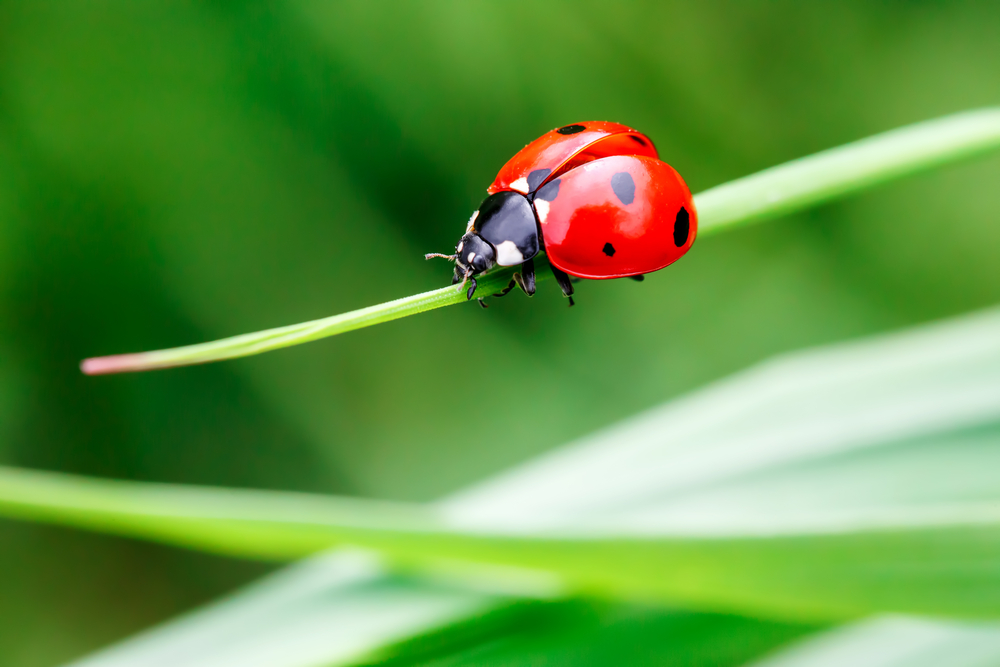
As a cannabis grower, you can have to deal with a lot of hassle. For example, you can suffer a lot from insects and other annoying little animals. You naturally want to protect your valuable plants against that, but you prefer not to use heavy, pesticides. Fortunately, there are often biological solutions that are a lot friendlier to your plant and the environment.
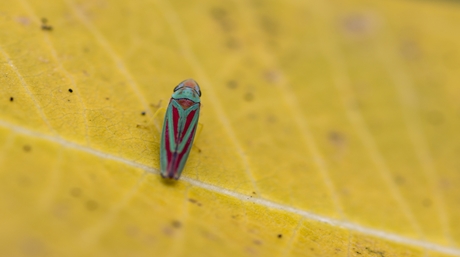
Garden pests really are a pain, and if your garden is a cannabis one, they are arguably even more so. One of the most common pests in cannabis grow are leafhoppers, tiny insects that can really harm your plants. Here is a handy little guide on how to spot them, and how to fix your issue if you have one:
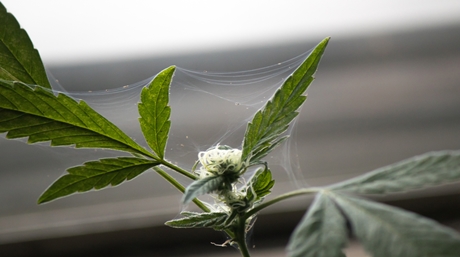
It is something every gardener has dealt with at some time. Whether you grow cannabis plants or you grow blackberries, some pest is just as interested in your plant as you are. One day you may walk out to find all of the leaves on your plant chewed up or you may find fine webbing surrounding all of your plants. What do you do?